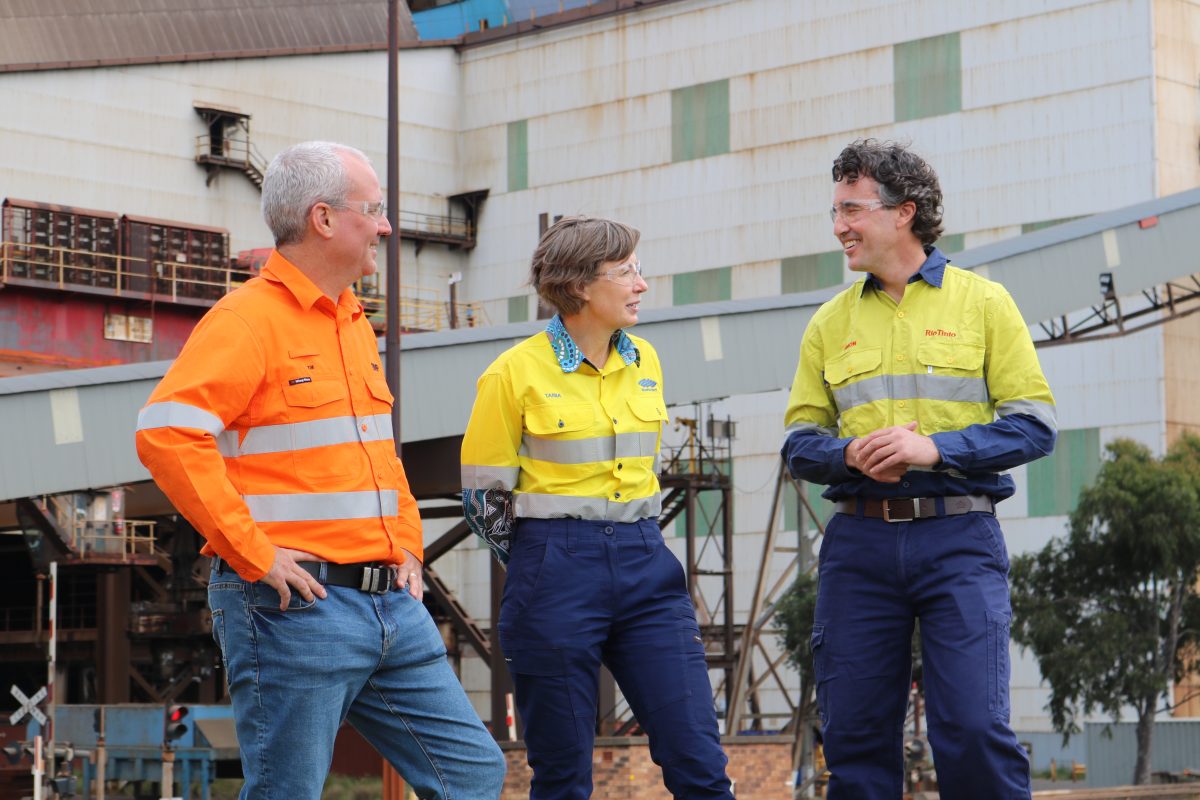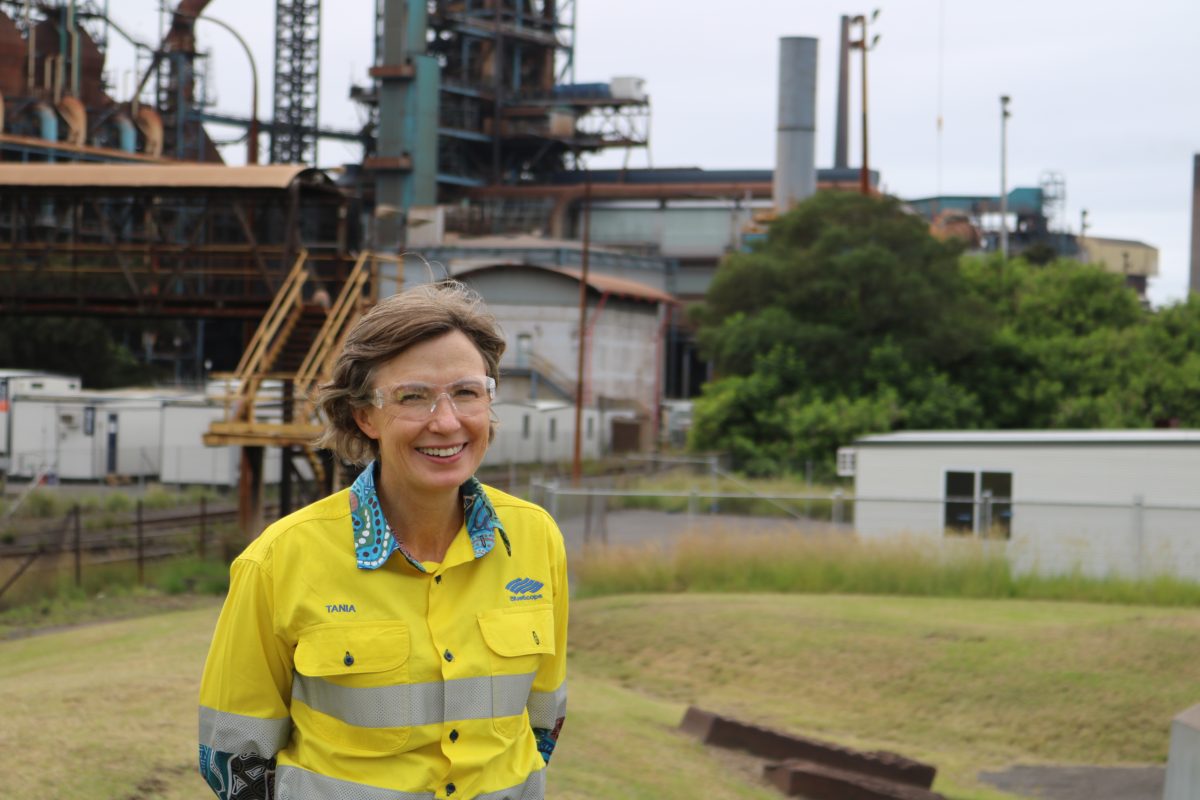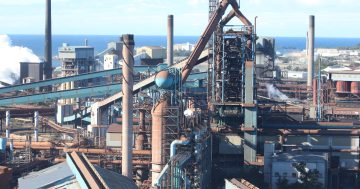
BHP’s Tim Day, BlueScope’s Tania Archibald and Rio Tinto’s Simon Trott at Port Kembla Steelworks. Photos: Jen White.
BlueScope, BHP and Rio Tinto will form an “unprecedented collaboration” in a bid to fast-track the delivery of low emission steelmaking.
Traditionally competitors in the production of iron ore, BHP and Rio Tinto will partner with BlueScope to develop Australia’s first ironmaking electric smelting furnace (ESF) pilot plant.
The three companies announced their partnership at the Port Kembla Steelworks on Friday (9 February).
The project aims to demonstrate that production of molten iron from Pilbara ores is feasible using renewable power when combined with direct reduced iron (DRI) process technology.
Ultimately, the electric smelting furnace and direct reduced iron technology would replace the blast furnace currently used at the steelworks, and eliminate the need for metallurgical coal.
BlueScope Chief Executive Australia Tania Archibald said it was a major opportunity for Australia on a global scale, as the worldwide steel industry looked for ways to decarbonise.
“Today’s announcement is a key milestone in a journey that’s already been several years in the making and we recognise there is still a long way to go as we seek to establish a commercially viable alternative to blast furnace steelmaking,” she said.
“One of the key advantages that BlueScope brings to this partnership is our unique experience of operating the only electric smelting furnace processing DRI in the world at our operations in New Zealand, and we’ve been doing that for over 14 years.
“DRI is the most prospective pathway to decarbonise iron steel. In the DRI process, natural gas and ultimately green hydrogen would replace coal in the steelmaking process.
“Natural gas-based DRI is estimated to reduce steelmaking emissions by about 60 per cent, while hydrogen-based DRI brings us closer towards zero – that’s the ambition, but DRI technology currently has limited application.
“With Rio Tinto’s and BHP’s deep knowledge of the Pilbara ores, and our unique operating knowledge of electric smelting technology, it’s hard to think of a team that is better placed to face this challenge.”
The companies will investigate several Australian locations for the proposed pilot plant, one of which will “definitely” be Port Kembla. The pre-feasibility study is expected to be completed by the end of the year, and if approved, the pilot plant could be commissioned in 2027.
Rio Tinto Iron Ore Chief Executive Simon Trott said the partnership was about securing the long-term future of Australia’s biggest export industry that provided more than $130 billion of export income.
“The Australian iron ore industry feeds the world’s steel industry, and that industry is decarbonising,” he said.
“We need to ensure that iron ore from Australia is well positioned for a green steel future and that is what today is all about.
“We know that we can’t solve this issue alone. We need to partner with others to find a solution.
“So today you see Australia’s two largest iron ore producers and Australia’s largest steelmaker rolling up our sleeves working to unlock low carbon pathways for Australian iron ore. That’s good for our business, it’s good for Australia, and that’s good for the future of our industry.”

BlueScope Chief Executive Tania Archibald: “… it’s hard to think of a team that is better placed to face this challenge”.
Incoming BHP Western Australia Iron Ore Asset President Tim Day said by joining forces, the three companies were aiming to fast-track the journey to reduce emissions from steel production.
“Combining our expertise, we hope to help fast-track near-zero emission-intensity pathways for steelmakers using Pilbara ores,” he said.
“If we can crack it, it’s actually going to be a significant uptick for the mining industry, the Pilbara, Western Australia, Australia in general and the globe.”
Original Article published by Jen White on Region Illawarra.



